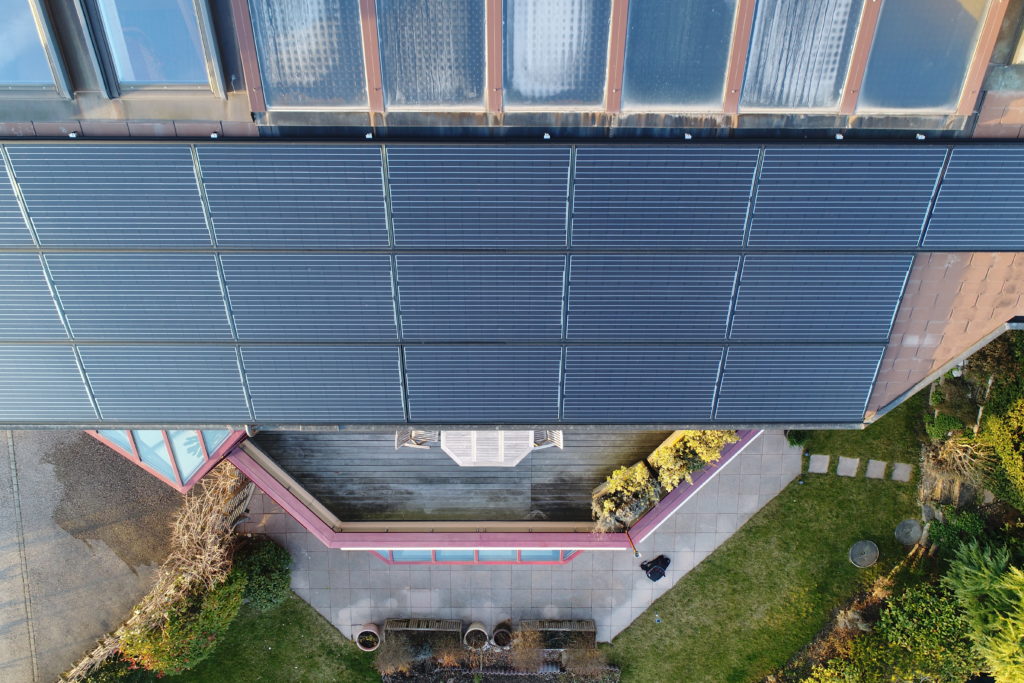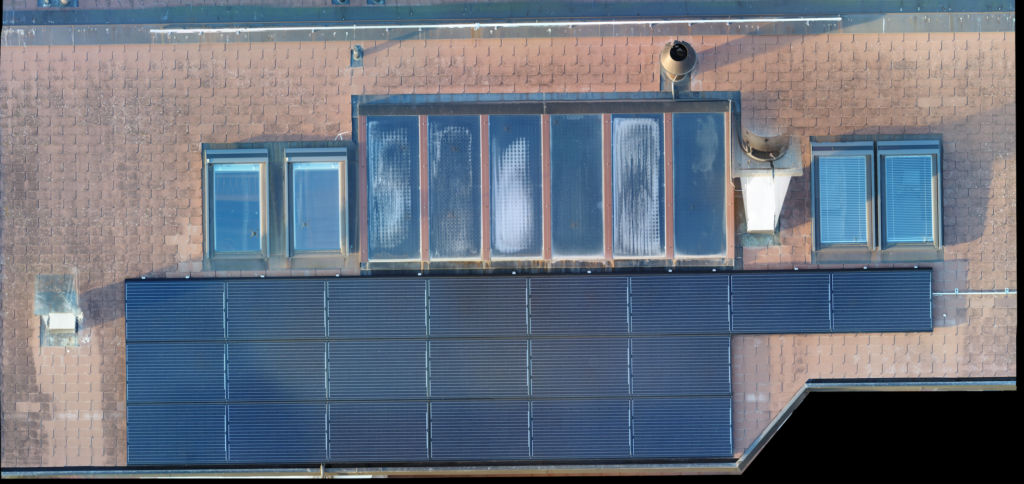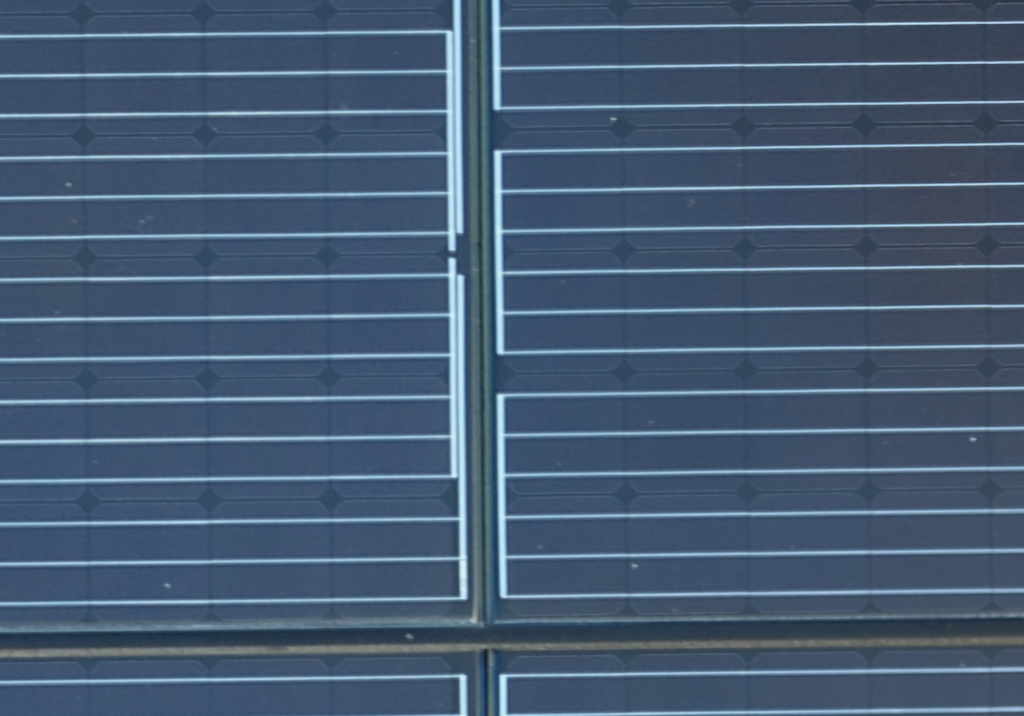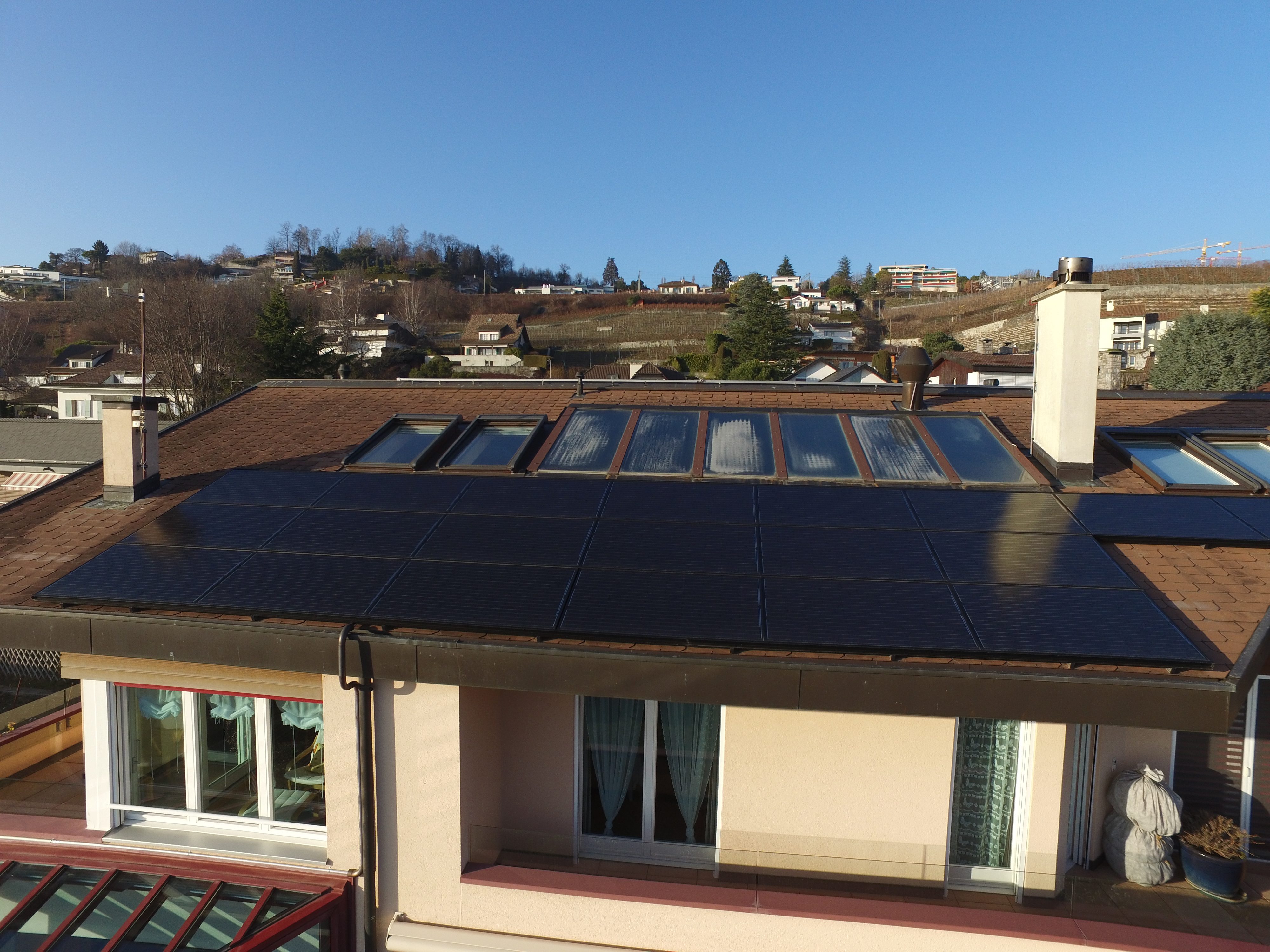An orthplane is an orthomosaic (or orthorectified image) from a facade of a building or any other vertical or angled object that has a more or less planar surface, examples: roofs, solar panels, bridge pillar,…
And what is an orthomosaic?
An orthomosaic is an image that has been corrected for optical distortions from the sensor system, apparent changes in the position of ground objects caused by the perspective of the sensor view angle and ground terrain.
In photogrammetry, an orthomosaic is created using dozen if not hundreds of pictures taken close to the subject to attain resolutions between 5cm/pixel down to 0.1cm/pixel. Pictures are then linked together by the software via keypoints, plus sensor data optimization, precise picture location and orientation determination.
Next, keypoints are used to reconstruct the scanned object in 3D in a Point Cloud. From that Point Cloud, a 3D surface can be computed such as the interactive Mesh below.
Deriving from the previous steps, the Digital Surface Model and the Orthomosaic can finally be constructed
The two main advantages of orthorectifed image are: high resolution and correction for optical distortion.
This means that an orthorectified image can be used in a GIS software and accurately overlaid with other data layers. Furthermore, accurate measurements can be performed on the image.
In contrast, if only one conventional picture was used, it would have to be taken high above the terrain so that everything were in frame, hence drastically limiting the resolution. And no accurate measurements can be performed because of distortion


Click for full resolution download



